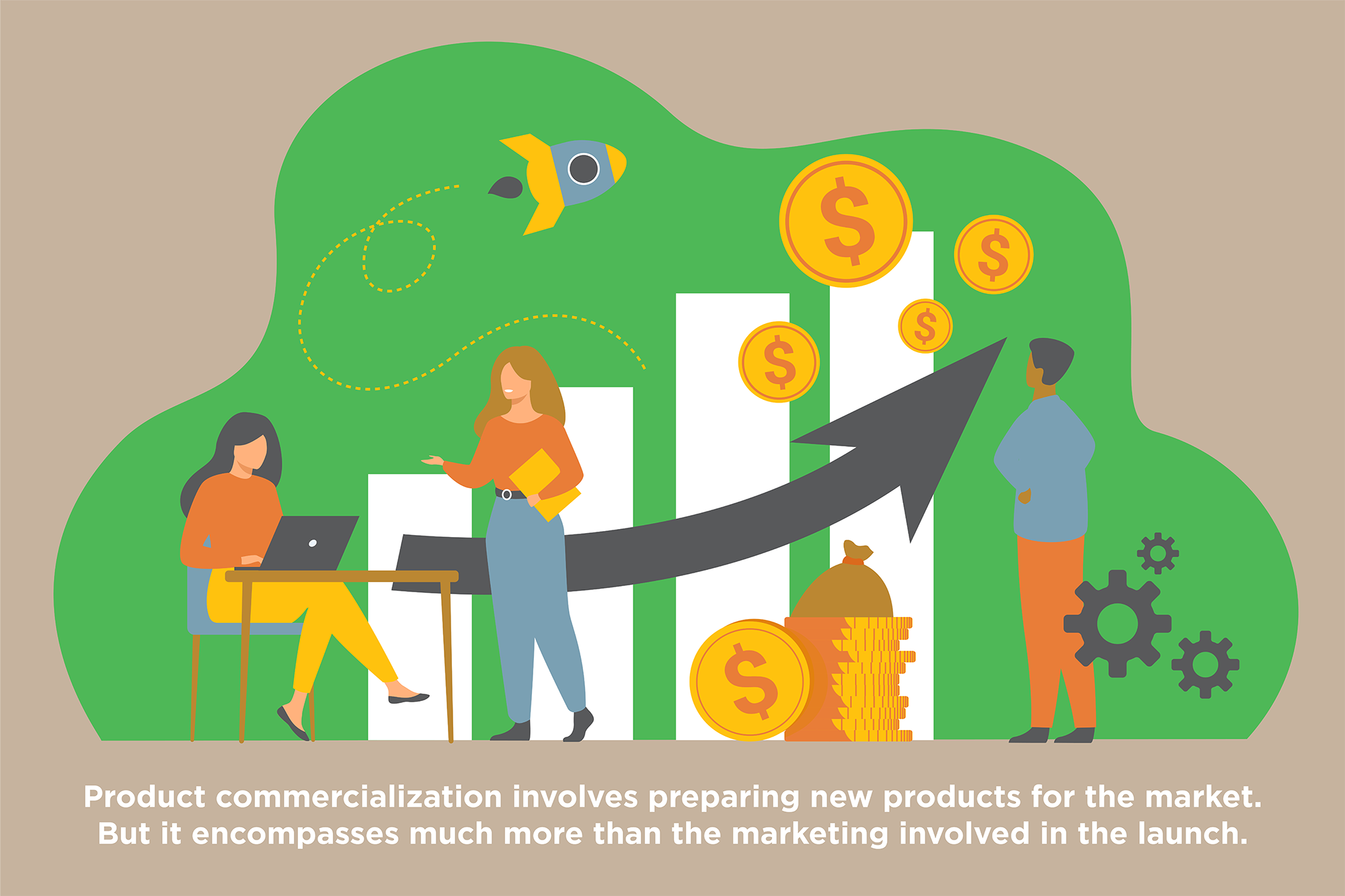From introducing a first-of-its-kind breakfast cereal to rolling out the latest iteration of an already popular kitchen appliance, there’s nothing new about new products. Indeed, a whopping 30,000 new product offerings reach the market in the average year, according to NielsenIQ. And that’s just in the consumer-packaged goods segment. A mere fraction of these product offerings, however, gain traction with the buying public.
A critical component to the success of a product launch is the product commercialization process. Whether you own a startup company and are dipping your toe into the product commercialization process or are a seasoned CEO aiming to streamline your new product introduction or new product development workflows, this article will address your business objectives.
Product commercialization explained
Product commercialization is a branch of product lifecycle management, which involves all the activities that occur over the course of a product’s life, from conceptualization to launch to retirement. Product commercialization occurs during the launch phase of a product’s lifecycle.
To the average consumer, commercialization might seem to refer solely to advertising and marketing – the promotional work that lets buyers know that a product exists, what it does, and where to buy it. Regarding product lifecycle management, however, commercialization can include ideation, research, assessment, development, prospecting, marketing, and more. In other words, commercialization encompasses all the processes that need to be completed before a product is ready for release. The specific activities relevant to commercialization largely depend on the type of product being brought to the market. What follows are some of the steps commonly involved in successful product commercialization:
- Perform research: Research helps to identify what, if any, market exists for a given product or innovation.
- Gather feedback: This stage involves soliciting the opinions and feedback of other stakeholders to determine what a new product should include to resonate with buyers, based on your market research.
- Obtain a patent: This step entails obtaining the credentials that identify you as the inventor from a governing authority. Patent protection is crucial to your intellectual property.
- Identify target audience: This is the prospecting stage, where you go out and identify the most likely customers for your new product offering and the best way to reach them, which includes marketing. Audience identification can be incorporated with your overall sales strategy.
- Monitor sales performance: After product launch, monitoring sales performance can help you with production and determining whether the new product is resonating with your audience.

Product commercialization: the most consequential stage of product lifecycle management
Product commercialization may be the most consequential stage of product lifecycle management. The commercialization process is largely where all the planning takes place. This includes not just marketing the product, but conducting the relevant research and collecting pertinent feedback to determine if there is an appetite or buying interest for a new soft drink, hard candy, plush mattress, or whatever your new product may be.
The reliability of the methods and procedures used during product commercialization can largely determine the end result. And because so many new product launches wind up failing, there is a lot of room for error during this pivotal stage. However, when done carefully and accurately, product commercialization can increase profitability, expand your customer base, improve process innovation, and enhance customer satisfaction through better product development.
The right tool to bring your products to life
There are many critical components to product lifecycle management. Oracle’s Product Lifecycle Management (PLM) applications have them all covered. Oracle Cloud PLM helps bring your product to life, from innovation to collaboration, to commercialization and more. It enables businesses to turn their best ideas into highly profitable product offerings. Cloud PLM makes this possible by helping you connect and manage all the steps and phases that are involved in the innovation pipeline to improve visibility and alignment across new product and service offerings or investments.
The removal of cordoned-off silos helps to support greater collaboration among all the departments taking part in bringing a product to the marketplace, thereby enhancing overall productivity, streamlining communication, reducing errors, and minimizing downtime. In a demand-heavy, consumer-driven economy — where beating the competition truly does matter — more collaboration in getting products ready for launch can be the difference between coming in first with your prospective customers or coming up short.
But beating the competition is all for naught if you get something wrong with the design or concept. Oracle Cloud Product Management guards against this by allowing you to reuse existing items, trace requirements through the design phases, and validate that each new product has been designed to reduce new product introduction risks. This shortens the time to market with a product that achieves business and technical expectations and specifications.
In addition, Oracle Cloud Product Management helps your company more effectively engage with your extended supply chain, providing visibility via collaboration on product design and features, as well as integrating PLM to other imperative enterprise business processes like Quality Management and more.
Oracle’s Product Management Cloud, which encompasses everything from ideation to commercialization, allows you to seamlessly monitor and manage product specifications, component optimization, supply risk, and other key production metrics. It also unifies processes in the production cycle — such as engineering and manufacturing — that might otherwise be disconnected, thereby driving overall efficiency and cost savings.
Regardless of your specific needs and goals, our Product Lifecycle Management team will help you move from ideation to project delivery without compromising quality or missing a beat. Contact us today to learn more.